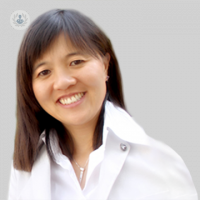4 exciting innovations that can enhance your braces treatment
Written in association with:When considering the principle of orthodontics, tooth movement hasn’t really changed. However, there have been more advances over time, such as more orthodontic appliances for straightening teeth and the integration of technology in dental and orthodontic care.
Dr Moira Wong takes us through these innovations to help you decide which is best for you.

1. Visible braces aren’t the only option anymore
Originally, there were only fixed braces available, which were clearly visible whenever your teeth were showing. But now, there are options that some patients might prefer because these aren’t visible. The two less visible types are:
• Invisalign: Over the years, Invisalign® (an invisible brace) has been refined and is doing an even better job than when it first became available.
• Lingual: Lingual braces are fixed appliances that stick to the inside of the teeth (and not the outside like with most braces). This means that they are not visible when the mouth opens. They’ve been around for a little while and are doing almost just as good a job as braces that are fixed to the outside of teeth.
Which one’s best?
At the end of the day, not all braces are suitable for all bites and orthodontic issues. To find out if the less visible braces will help you reach your goal, it’s important to see a qualified orthodontist to work out which type of braces would work for your particular problem.
2. You could change to invisible braces during treatment
If you need to have the fixed, visible braces on the outside of your teeth, you might feel conscious about your appearance. However, you could start with the fixed, visible braces for a shorter time followed by an invisible option for the rest of the treatment. This is something that is particularly of interest to adults and is something that we offer at my practice Moira Wong Orthodontics.
The benefit is that by having both a fixed appliance and an invisible one, you don’t need to spend the entire 18-24 months (the average time for complex cases) with fixed, visible braces. A milder case generally involves 9-12 months of treatment.
However, it’s important to consider that sometimes, Invisalign isn’t as effective at moving the teeth to the desired position, compared to fixed braces.
Has the length of treatment been shortened over time?
I think that there has been a tendency to shorten the time of orthodontic tooth movement, but that it’s at the cost of a poorer result that’s less stable. There have been techniques to straighten the front teeth faster but often, the bites aren’t corrected and the teeth move back to their original position. To move teeth safely, you need to move them slowly and gently so that you don’t compromise the long-term lifespan of the teeth.
3. See what your teeth would look like during and after treatment
One of the most exciting technologies (and one we’re going to have on the Moira Wong Orthodontics website) is the opportunity for patients to see what their teeth could look like during and after treatment.
1. The patient uploads a photo of their teeth to the website using their smartphone.
2. They can see what they would look like with fixed braces on the outside of the teeth, the inside, and with Invisalign.
3. They can have a look at what their teeth will look like (e.g. the shape and spacing) after all the treatment has finished. It’s not 100% accurate, but it gives people a very good idea about the expected look of their teeth during and after treatment.
4. Video appointments and check-ups
One of the technological innovations that’s use has grown rapidly is online video consultations for appointments and check-ups. This is partly because the COVID-19 pandemic has meant that face-to-face appointments aren’t so available. As a result, we’ve made good use of remote appointments so that patients from the UK and overseas can continue their dental and orthodontic treatment with us.
Patients, no matter where they are from, can come to the clinic in London for initial treatment and then we can monitor their progress remotely, but still with the occasional face-to-face visit.
For example, we can send the Invisalign tray (the see-through mould of the teeth) to a patient, meaning that they don’t need to travel to the clinic. It’s normal to adjust fixed braces in the clinic every 5-6 weeks but when we use Invisalign, we can see patients remotely with video consultations to monitor progress. Thanks to the new software we have at the clinic, patients can upload pictures of their teeth and braces so that we can make sure things are going well. But we still see patients face-to-face when we need to, depending on how they’re tracking their braces.
Visit Dr Moira Wong’s profile to learn more about how she and her team can help you achieve your dream smile.


